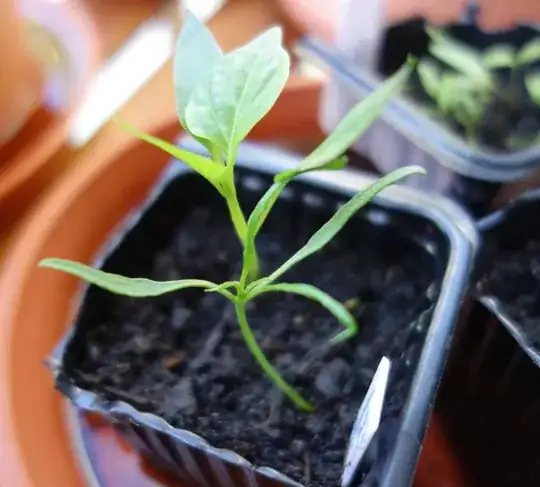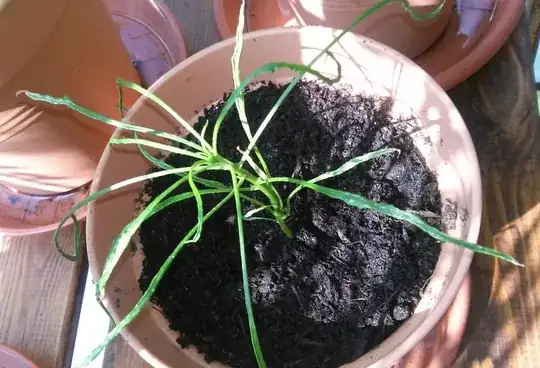First, I'm not sure it's a narrow leafed variety. I can see at the top of the plant that it's already starting to broaden it's leaves. I've had narrow starter leaves before and while it may be genetics, I think it's more to do with initial growing conditions. Just like they'll get tall and leggy when started inside and grow stout and much faster when grown in the summer sun.
However, I should think it would be easy to encourage a trait in chilies. It should be self propagating. All you'd need to do was keep it from being pollinated by other chilies. You can most easily do this by keeping it away from all other chili plants. Chances are, any bugs that come to pollinate it won't have spore from other chili plants to contaminate this one. Keeping in mind that some bees will pollinate many miles away from home. If you were super serious about keeping it pure, you could put a bug net around it and pollinate it yourself with a cotton swab or a feather.
Chances are though, that you'll do just as well, and with less effort to just let it happen naturally. Collect the best looking, most fully mature seed pods and set them on a window sill to dry. You can also string them on piece of thread through the caps, put them in a dehydrator, or bake them low and slow in the oven till dry. The oven uses a lot of power, though. If you leave them to dry naturally, leave the green caps on to prevent infection. Mine tended to turn black and rot when I broke the cap, but dried well with it on. Once the chilies are dry, they snap right off and you can shake most of the seeds out. Breaking them up gets even more.
Caution: Please use rubber gloves when handling even mild chilies. I've learned from hard experience that when you don't and then wash your hands 10 times with hot water, thinking you've gotten it all off, you'll find your mistaken when you scratch your nose and then go to the bathroom.
Once the seeds are dry, you can store them in airtight, dry containers, like pill bottles, film canisters, glass jars, or even paper envelopes.
Next year, plant a lot of seeds and cull 90-95% of the plants that are furthest from your ideal plant. Repetition will help you end up with a plant that consistently looks like you want it to.
On a side note, you should also probably look for similar chilies at the plant stores that look close to what you want an let new genes infuse the plants. Just like with any other species, line breeding like this increases the desired trait, but also increases the negative traits. You may breed strong plants at first, but they could end up more and more disease prone or you may breed in some other feature you really didn't want. That's why places that breed new chili strains start out with massive green houses full of chili plants and control pollination with indoor beehives. This allows not only control, but a wide gene pool.

